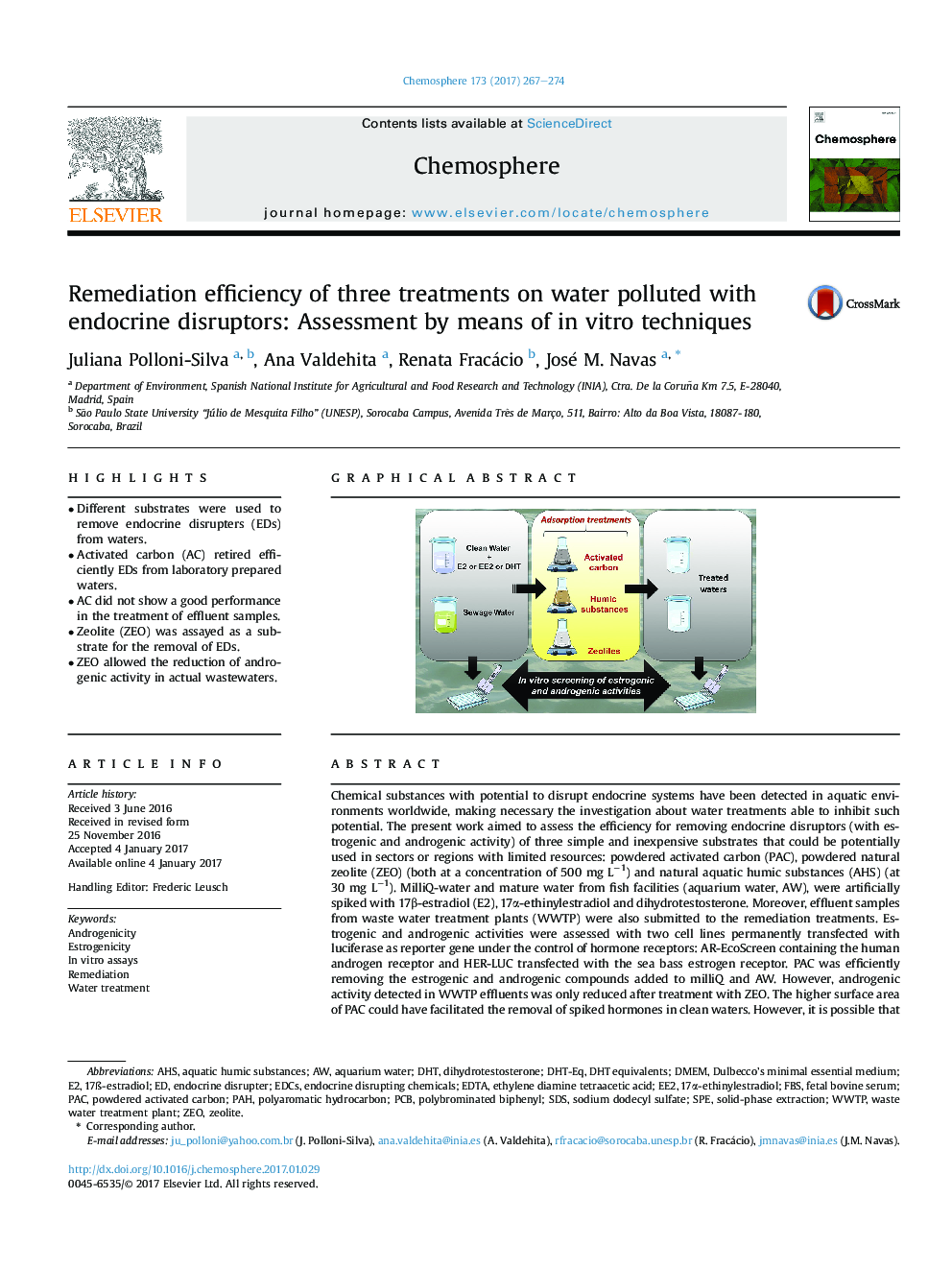| کد مقاله | کد نشریه | سال انتشار | مقاله انگلیسی | نسخه تمام متن |
|---|---|---|---|---|
| 5747422 | 1618798 | 2017 | 8 صفحه PDF | دانلود رایگان |

- Different substrates were used to remove endocrine disrupters (EDs) from waters.
- Activated carbon (AC) retired efficiently EDs from laboratory prepared waters.
- AC did not show a good performance in the treatment of effluent samples.
- Zeolite (ZEO) was assayed as a substrate for the removal of EDs.
- ZEO allowed the reduction of androgenic activity in actual wastewaters.
Chemical substances with potential to disrupt endocrine systems have been detected in aquatic environments worldwide, making necessary the investigation about water treatments able to inhibit such potential. The present work aimed to assess the efficiency for removing endocrine disruptors (with estrogenic and androgenic activity) of three simple and inexpensive substrates that could be potentially used in sectors or regions with limited resources: powdered activated carbon (PAC), powdered natural zeolite (ZEO) (both at a concentration of 500 mg Lâ1) and natural aquatic humic substances (AHS) (at 30 mg Lâ1). MilliQ-water and mature water from fish facilities (aquarium water, AW), were artificially spiked with 17β-estradiol (E2), 17α-ethinylestradiol and dihydrotestosterone. Moreover, effluent samples from waste water treatment plants (WWTP) were also submitted to the remediation treatments. Estrogenic and androgenic activities were assessed with two cell lines permanently transfected with luciferase as reporter gene under the control of hormone receptors: AR-EcoScreen containing the human androgen receptor and HER-LUC transfected with the sea bass estrogen receptor. PAC was efficiently removing the estrogenic and androgenic compounds added to milliQ and AW. However, androgenic activity detected in WWTP effluents was only reduced after treatment with ZEO. The higher surface area of PAC could have facilitated the removal of spiked hormones in clean waters. However, it is possible that the substances responsible of the hormonal activity in WWTP have adsorbed to micro and nanoparticles present in suspension that would have been retained with higher efficiency by ZEO that show pores of several microns in size.
242
Journal: Chemosphere - Volume 173, April 2017, Pages 267-274